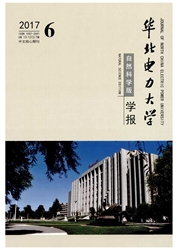

 中文摘要:
中文摘要:
水系统集成技术从用水系统的整体分析、设计和改造用水网络,可以有效地节约新鲜水用量,同时减少污水排放。整体性是水系统集成思想的核心,但当系统复杂时,仅注重整体性会使集成方案的实用性降低。如何设计出简单、实用的用水网络,一直是水系统集成技术工业应用中迫切需要解决的问题之一。提出水系统集成技术工业应用的优化策略,即注重整体,也要考虑局部的思想。根据实际的工艺要求,先把工艺用水关系紧密的工序局部优化,然后再把优化后的工序作为一个虚单元参与全厂的整体优化。经优化后,既能保证水网络的最小新鲜水消耗量,也能设计出符合工艺需求的实用水网络。最后结合一个工业实例——某炼油厂用水系统,说明所提优化策略的应用及优点。
 英文摘要:
英文摘要:
Water integration treats a water system as an organic whole to analyze, design and retrofit a water system, so can reduce freshwater consumption and wastewater discharge effectively. However, when dealing with a complicated water system, if the system is taken as a whole, the network may be impractical. How to design a simple and practical water network has become one task in the industrial application. Optimization strategy of water integration in industrial application is proposed in this paper, which requires meeting local demands when dealing with the whole net- work design. According to the process requirements in some parts of the system, all of the close related water units are picked out and defined as a dummy unit, and should be optimized first. Then the optimization for the whole system is performed, containing each dummy unit as a process. In this way, a practical water network with the minimum freshwater consumption can be obtained. To illustrate the application and effectiveness of the optimization strategy of water integration proposed in this paper, a case study for retrofitting a water system in a petrochemical plan is presented.
 同期刊论文项目
同期刊论文项目
 同项目期刊论文
同项目期刊论文
 期刊信息
期刊信息
